Iowa's 4th congressional district
Coordinates: 42°37′43″N 94°38′42″W / 42.62861°N 94.64500°W
| Iowa's 4th congressional district | |||
|---|---|---|---|
 Iowa's 4th congressional district since January 3, 2013 | |||
| Representative |
| ||
| Distribution |
| ||
| Population (2019) | 749,897 | ||
| Median household income | $58,270[1] | ||
| Ethnicity |
| ||
| Cook PVI | R+16[2] | ||
Iowa's 4th congressional district is a congressional district in the U.S. state of Iowa that covers its northwestern part. The district includes Sioux City, Ames, Mason City, Fort Dodge, Boone and Carroll; it is currently represented by Republican Randy Feenstra, who has been in office since 2021. With a Cook Partisan Voting Index rating of R+16, it is the most Republican district in Iowa.[2]
History[]
Since the 1880s, there have been major changes in the location or nature of Iowa's 4th Congressional District. From 1886 until 1941, the district was made up of largely rural counties in northeastern Iowa, including the easternmost five counties in the northernmost two rows[3] (and, during the 1930s, Buchanan and Delaware counties from the third row).[4] During that era, the district included areas from Mason City east to the Mississippi River.
In 1941, Iowa's 5th Congressional District (made up of rural counties in southern Iowa) was renumbered as Iowa's 4th Congressional District, and counties in the old 4th District were placed in the 3rd District and the 2nd District.[5] (In 1942, 4th District incumbent, Henry O. Talle, would defeat the 2nd District incumbent William S. Jacobsen in the new 2nd Congressional District). From 1941 until 1960 the 4th Congressional District included the central five counties of each of the two southernmost tiers, plus four counties between Des Moines and Iowa City (Mahaska, Keokuk, Jasper and Poweshiek).[5] 5th District incumbent Republican U.S. Representative Karl M. LeCompte was reelected in the reconfigured 4th District in 1942, and was reelected in the next seven races. In 1958, when LeCompte did not run for reelection, Democrat Steven V. Carter defeated Republican John Kyl. A recurrence of cancer would claim Carter's life before the end of his only term, and Kyl won the special election and next general election. In 1961 the 4th Congressional District was expanded to include five central Iowa counties - Warren, Marion, Marshall, Tama and Benton[6] - but retained its rural character. Kyl held this seat until he was swept out in the massive Democratic landslide of 1964. However, he regained his old seat in 1966, and was reelected two more times.
The rural character of the district was changed when most of its territory was merged with the Des Moines-based 5th District of Democratic incumbent Neal Smith after the 1970 census. Polk County (home to Des Moines and most of its suburbs) was added, while most of the rural counties were taken out.[7] Smith defeated Kyl in the 1972 congressional election. The district became even less rural in 1981, when Story County (home of Ames) was added, and other rural counties were taken out.[8] The district was significantly altered after the 1990 census, when it was reconfigured to take in the southwest quadrant of the state from Des Moines to Council Bluffs. Smith was reelected in 1992, but defeated in 1994 by Republican Greg Ganske.
The 2001 remap made the 4th district a north-central Iowa district. It could not be said to be the successor of any of the previous districts. It was a primarily rural district, though it included Ames and Mason City. It did not include any of the state's nine largest cities, and only four of the twenty largest Iowa cities.[9] The plan went into effect in 2003 for the 108th U.S. Congress.[10] The 5th's incumbent congressman, Tom Latham, had his home in Alexander drawn into the 4th, and was elected from this district five times.
For the 2012 elections, the Iowa Legislature passed a plan that went into effect in 2013 for the 113th U.S. Congress. The district now covers the northwest corner of the state, and essentially merged the northern half of the old 5th District with the western third of the old 4th. The new map placed Latham and 5th District incumbent Steve King in the same district. Although the new 4th was geographically more Latham's district, he opted to move to the redrawn 3rd District, leaving King to take the seat. The current 4th district is by far the most conservative in Iowa - it was the only one of the state's four districts to be won by Mitt Romney in 2012, and Donald Trump carried it by over 25 points in 2016. Additionally, King was the only Republican House member from Iowa during the 116th Congress, although he faced a close race in 2018 due to his long history of controversial comments.
In June 2020, Steve King was defeated in the Republican House primary by challenger Randy Feenstra.
Statewide races since 2000[]
Election results from statewide races:
| Office | Year | District | Statewide | Nationwide |
|---|---|---|---|---|
| President | 2000 | George W. Bush 49% – Al Gore 48% | Gore | Bush |
| 2004 | George W. Bush 51% – John Kerry 48% | Bush | ||
| 2008 | Barack Obama 53% – John McCain 45% | Obama | Obama | |
| 2012 | Mitt Romney 53% – Barack Obama 45% | |||
| 2016 | Donald Trump 61% – Hillary Clinton 34% | Trump | Trump | |
| 2020 | Donald Trump 63% – Joe Biden 36% | Biden |
List of members representing the district[]
| Member | Party | Term | Cong ress |
Electoral history |
|---|---|---|---|---|
| District created March 4, 1863 | ||||
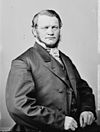 Josiah B. Grinnell |
Republican | March 4, 1863 – March 3, 1867 |
38th 39th |
Elected in 1862. Re-elected in 1864. Lost renomination. |
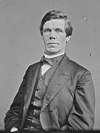 William Loughridge |
Republican | March 4, 1867 – March 3, 1871 |
40th 41st |
Elected in 1866. Re-elected in 1868. Lost renomination. |
 Madison M. Walden |
Republican | March 4, 1871 – March 3, 1873 |
42nd | Elected in 1870. Lost renomination. |
 Henry O. Pratt |
Republican | March 4, 1873 – March 3, 1877 |
43rd 44th |
Elected in 1872. Re-elected in 1874. Retired. |
 Nathaniel C. Deering |
Republican | March 4, 1877 – March 3, 1883 |
45th 46th 47th |
Elected in 1876. Re-elected in 1878. Re-elected in 1880. Retired. |
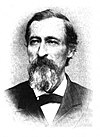 Luman H. Weller |
Greenback | March 4, 1883 – March 3, 1885 |
48th | Elected in 1882. Lost re-election. |
 William E. Fuller |
Republican | March 4, 1885 – March 3, 1889 |
49th 50th |
Elected in 1884. Re-elected in 1886. Lost renomination. |
 Joseph H. Sweney |
Republican | March 4, 1889 – March 3, 1891 |
51st | Elected in 1888. Lost re-election. |
 Walter H. Butler |
Democratic | March 4, 1891 – March 3, 1893 |
52nd | Elected in 1890. Lost re-election. |
 Thomas Updegraff |
Republican | March 4, 1893 – March 3, 1899 |
53rd 54th 55th |
Elected in 1892. Re-elected in 1894. Re-elected in 1896. Lost renomination. |
 Gilbert N. Haugen |
Republican | March 4, 1899 – March 3, 1933 |
56th 57th 58th 59th 60th 61st 62nd 63rd 64th 65th 66th 67th 68th 69th 70th 71st 72nd |
Elected in 1898. Re-elected in 1900. Re-elected in 1902. Re-elected in 1904. Re-elected in 1906. Re-elected in 1908. Re-elected in 1910. Re-elected in 1912. Re-elected in 1914. Re-elected in 1916. Re-elected in 1918. Re-elected in 1920. Re-elected in 1922. Re-elected in 1924. Re-elected in 1926. Re-elected in 1928. Re-elected in 1930. Lost re-election. |
 Fred Biermann |
Democratic | March 4, 1933 – January 3, 1939 |
73rd 74th 75th |
Elected in 1932. Re-elected in 1934. Re-elected in 1936. Lost re-election. |
 Henry O. Talle |
Republican | January 3, 1939 – January 3, 1943 |
76th 77th |
Elected in 1938. Re-elected in 1940. Redistricted to the 2nd district. |
 Karl M. LeCompte |
Republican | January 3, 1943 – January 3, 1959 |
78th 79th 80th 81st 82nd 83rd 84th 85th |
Redistricted from the 5th district and re-elected in 1942. Re-elected in 1944. Re-elected in 1946. Re-elected in 1948. Re-elected in 1950. Re-elected in 1952. Re-elected in 1954. Re-elected in 1956. Retired. |
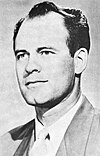 Steven V. Carter |
Democratic | January 3, 1959 – November 4, 1959 |
86th | Elected in 1958. Died. |
| Vacant | November 4, 1959 – December 15, 1959 |
|||
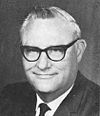 John H. Kyl |
Republican | December 15, 1959 – January 3, 1965 |
86th 87th 88th |
Elected to finish Carter's term. Re-elected in 1960. Re-elected in 1962. Lost re-election. |
 Bert Bandstra |
Democratic | January 3, 1965 – January 3, 1967 |
89th | Elected in 1964. Lost re-election. |
 John H. Kyl |
Republican | January 3, 1967 – January 3, 1973 |
90th 91st 92nd |
Elected in 1966. Re-elected in 1968. Re-elected in 1970. Lost re-election. |
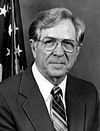 Neal E. Smith |
Democratic | January 3, 1973 – January 3, 1995 |
93rd 94th 95th 96th 97th 98th 99th 100th 101st 102nd 103rd |
Redistricted from the 5th district and re-elected in 1972. Re-elected in 1974. Re-elected in 1976. Re-elected in 1978. Re-elected in 1980. Re-elected in 1982. Re-elected in 1984. Re-elected in 1986. Re-elected in 1988. Re-elected in 1990. Re-elected in 1992. Lost re-election. |
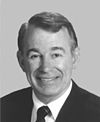 Greg Ganske |
Republican | January 3, 1995 – January 3, 2003 |
104th 105th 106th 107th |
Elected in 1994. Re-elected in 1996. Re-elected in 1998. Re-elected in 2000. Redistricted to the 3rd district but retired to run for U.S. senator. |
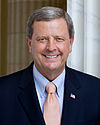 Tom Latham |
Republican | January 3, 2003 – January 3, 2013 |
108th 109th 110th 111th 112th |
Redistricted from the 5th district and re-elected in 2002. Re-elected in 2004. Re-elected in 2006. Re-elected in 2008. Re-elected in 2010. Redistricted to the 3rd district. |
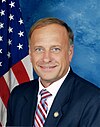 Steve King |
Republican | January 3, 2013 – January 3, 2021 |
113th 114th 115th 116th |
Redistricted from the 5th district and re-elected in 2012. Re-elected in 2014. Re-elected in 2016. Re-elected in 2018. Lost re-nomination. |
 Randy Feenstra |
Republican | January 3, 2021 – Present |
117th | Elected in 2020. |
Historical election results[]
| Year[11] | Winner | Second | Percentage | ||||
|---|---|---|---|---|---|---|---|
| Party affiliation | Candidate | Votes | Party affiliation | Candidate | Votes | ||
| 1920 | Republican | Gilbert N. Haugen | 53,083 | Democratic | Carl Evans | 18,104 | 75%–25% |
| 1922 | 32,586 | 24,532 | 57%–43% | ||||
| 1924 | 50,850 | 20,636 | 71%–29% | ||||
| 1926 | 30,611 | 20,076 | 60%–40% | ||||
| 1928 | 50,488 | 31,968 | 61%–39% | ||||
| 1930 | 29,224 | 20,236 | 59%–41% | ||||
| 1932 | Democratic | Fred Biermann | 62,598 | Republican | Gilbert N. Haugen | 42,207 | 59%–41% |
| 1934 | 49,504 | 43,794 | 52%–46% | ||||
| 1936 | 56,308 | Henry O. Talle | 51,805 | 51%–47% | |||
| 1938 | Republican | Henry O. Talle | 48,640 | Democratic | Fred Biermann | 44,601 | 52%–48% |
| 1940 | 66,691 | 51,558 | 56%–44% | ||||
| 1942 | Karl M. LeCompte | 52,258 | 28,745 | 65%–35% | |||
| 1944 | 59,658 | 49,098 | 55%–45% | ||||
| 1946 | 43,753 | 31,203 | 58%–42% | ||||
| 1948 | 53,384 | Steven V. Carter | 49,894 | 52%–48% | |||
| 1950 | 51,168 | 38,649 | 57%–43% | ||||
| 1952 | 73,317 | 44,900 | 62%–38% | ||||
| 1954 | 49,608 | Herschel C. Loveless | 39,652 | 56%–44% | |||
| 1956 | 58,024 | Steven V. Carter | 56,406 | 51%–49% | |||
| 1958 | Democratic | Steven V. Carter | 42,479 | Republican | John Henry Kyl | 39,233 | 52%–48% |
| 1960 | Republican | John Henry Kyl | 65,016 | Democratic | 49,918 | 57%–43% | |
| 1962 | 65,538 | Gene W. Glenn | 51,810 | 56%–44% | |||
| 1964 | Democratic | Bert Bandstra | 85,518 | Republican | John Henry Kyl | 73,898 | 54%–46% |
| 1966 | Republican | John Henry Kyl | 65,259 | Democratic | Bert Bandstra | 61,074 | 52%–48% |
| 1968 | 83,259 | 71,134 | 54%–46% | ||||
| 1970 | 59,396 | 49,369 | 55%–45% | ||||
| 1972 | Democratic | Neal Edward Smith | 123,431 | Republican | John Henry Kyl | 85,156 | 59%–41% |
| 1974 | 91,755 | 53,756 | 61%–35% | ||||
| 1976 | 145,343 | 65,013 | 69%–31% | ||||
| 1978 | 88,526 | 48,308 | 65%–35% | ||||
| 1980 | 117,896 | 100,335 | 54%–36% | ||||
| 1982 | 118,849 | 60,534 | 66%–34% | ||||
| 1984 | 136,922 | 88,717 | 61%–39% | ||||
| 1986 | 107,271 | 49,641 | 68%–32% | ||||
| 1988 | 157,065 | 62,056 | 72%–28% | ||||
| 1990 | 127,812 | unopposed | 2,778 | 98%–2% | |||
| 1992 | 158,610 | Republican | Paul Lunde | 94,045 | 62%–37% | ||
| 1994 | Republican | Greg Ganske | 111,935 | Democratic | Neal Edward Smith | 98,824 | 53%–46% |
| 1996 | 133,419 | 119,790 | 52%–47% | ||||
| 1998 | 129,942 | 67,550 | 65%–34% | ||||
| 2000 | 169,267 | 101,112 | 61%–37% | ||||
| 2002 | Tom Latham | 115,430 | 90,784 | 55%–43% | |||
| 2004 | 181,294 | 116,121 | 61%–39% | ||||
| 2006 | 120,512 | 89,994 | 57%–43% | ||||
| 2008 | 184,529 | 119,927 | 60%–39% | ||||
| 2010 | 152,588 | 74,300 | 64%–31% | ||||
| 2012 | Steve King | 200,831 | Christie Vilsack | 168,323 | 53%–45% | ||
| 2014 | 169,141 | Jim Mowrer | 104,873 | 62%–38% | |||
| 2016 | 226,719 | Kim Weaver | 142,993 | 61%–39% | |||
| 2018 | 157,275 | J. D. Scholten | 146,737 | 50.3%–47.0% | |||
| 2020 | Randy Feenstra | 237,369 | 144,761 | 62.0%–37.8% | |||
Recent election results[]
2002[]
| Party | Candidate | Votes | % | |
|---|---|---|---|---|
| Republican | Tom Latham* | 115,430 | 54.77 | |
| Democratic | John Norris | 90,784 | 43.07 | |
| Libertarian | Terry L. Wilson | 2,952 | 1.40 | |
| Independent | Jim Hennager | 1,544 | 0.73 | |
| No party | Others | 64 | 0.03 | |
| Total votes | 210,774 | 100.00 | ||
| Turnout | ||||
| Republican hold | ||||
- Note: Jim Hennager ran on the Earth Federation Party platform on the ballot.
2004[]
| Party | Candidate | Votes | % | |
|---|---|---|---|---|
| Republican | Tom Latham* | 181,294 | 60.93 | |
| Democratic | Paul W. Johnson | 116,121 | 39.02 | |
| No party | Others | 151 | 0.05 | |
| Total votes | 297,566 | 100.00 | ||
| Turnout | ||||
| Republican hold | ||||
2006[]
| Party | Candidate | Votes | % | |
|---|---|---|---|---|
| Republican | Tom Latham* | 121,650 | 57.19 | |
| Democratic | Selden Spencer | 90,982 | 42.77 | |
| No party | Others | 98 | 0.05 | |
| Total votes | 212,730 | 100.00 | ||
| Turnout | ||||
| Republican hold | ||||
2008[]
| Party | Candidate | Votes | % | |
|---|---|---|---|---|
| Republican | Tom Latham* | 185,458 | 60.53 | |
| Democratic | Becky Greenwald | 120,746 | 39.41 | |
| No party | Others | 197 | 0.06 | |
| Total votes | 306,401 | 100.00 | ||
| Turnout | ||||
| Republican hold | ||||
2010[]
| Party | Candidate | Votes | % | |
|---|---|---|---|---|
| Republican | Tom Latham* | 152,588 | 65.62 | |
| Democratic | Bill Maske | 74,300 | 31.95 | |
| Independent | Dan Lensing | 5,499 | 2.37 | |
| No party | Others | 132 | 0.06 | |
| Total votes | 232,519 | 100.00 | ||
| Turnout | ||||
| Republican hold | ||||
2012[]
| Party | Candidate | Votes | % | |
|---|---|---|---|---|
| Republican | Steve King* | 200,063 | 51.69 | |
| Democratic | Christie Vilsack | 169,470 | 43.78 | |
| Independent | Martin James Monroe | 8,124 | 2.10 | |
| No party | Others | 226 | ||
| Total votes | 387,079 | 100.00 | ||
| Turnout | ||||
| Republican hold | ||||
2014[]
| Party | Candidate | Votes | % | |
|---|---|---|---|---|
| Republican | Steve King (incumbent) | 169,834 | 61.6 | |
| Democratic | Jim Mowrer | 105,504 | 38.3 | |
| Write-ins | 295 | 0.1 | ||
| Total votes | 275,633 | 100 | ||
| Republican hold | ||||
2016[]
| Party | Candidate | Votes | % | |
|---|---|---|---|---|
| Republican | Steve King (incumbent) | 226,719 | 61.23 | |
| Democratic | Kim Weaver | 142,993 | 38.62 | |
| Write-ins | 547 | 0.15 | ||
| Total votes | 370,259 | 100 | ||
| Republican hold | ||||
2018[]
| Party | Candidate | Votes | % | ±% | |
|---|---|---|---|---|---|
| Republican | Steve King (incumbent) | 157,275 | 50.33 | −10.9 | |
| Democratic | J. D. Scholten | 146,737 | 46.96 | +8.34 | |
| Libertarian | Charles Aldrich | 6,315 | 2.02 | +2.02 | |
| Independent | Edward Peterson | 1,940 | 0.62 | +0.62 | |
| Write-ins | 201 | 0.06 | −0.09 | ||
| Majority | 10,538 | 3.37 | |||
| Turnout | 312,468 | 100 | |||
| Republican hold | Swing | –19.24 | |||
2020[]
| Party | Candidate | Votes | % | |
|---|---|---|---|---|
| Republican | Randy Feenstra | 237,369 | 62.0 | |
| Democratic | J. D. Scholten | 144,761 | 37.8 | |
| Write-in | 892 | 0.2 | ||
| Total votes | 383,022 | 100.0 | ||
| Republican hold | ||||
Historical district boundaries[]

See also[]
References[]
- General
- ^ Center for New Media & Promotion (CNMP), US Census Bureau. "My Congressional District". www.census.gov.
- ^ Jump up to: a b "Introducing the 2021 Cook Political Report Partisan Voter Index". The Cook Political Report. April 15, 2021. Retrieved April 15, 2021.
- ^ "The Congressional Districts," Waterloo Courier, 1886-04-14 at 4; Iowa's Official Register (1930).
- ^ Iowa's Official Register, 1933-34, at 6.
- ^ Jump up to: a b Iowa's Official Register, 1943-1944, at 15.
- ^ "Another redrawing," Ames Daily Tribune, 1970-07-07 at 4.
- ^ Iowa Official Register, 1973-74, at 30.
- ^ Iowa Official Register, 1983-84, at 46.
- ^ Iowa League of Cities,Population of Iowa Cities of 8,000 or More Archived 2008-05-11 at the Wayback Machine, accessed 2008-07-27.
- ^ "2001 Iowa Redistricting Plan,". 2001. Archived from the original on October 16, 2006. Retrieved November 10, 2006.
- ^ "Election Statistics,". 2005. Archived from the original on July 25, 2007.
- ^ "Iowa General Election 2014". Iowa Secretary of State. November 4, 2014. Archived from the original on December 13, 2014. Retrieved December 19, 2014.
- ^ "Iowa General Election 2014". Iowa Secretary of State. November 4, 2014. Archived from the original on December 24, 2016. Retrieved December 19, 2014.
- ^ "Iowa General Election 2018". Iowa Secretary of State. Retrieved November 11, 2018.
- ^ "General Election - 2020 Canvass Summary" (PDF). Iowa Secretary of State.
- Specific
- Martis, Kenneth C. (1989). The Historical Atlas of Political Parties in the United States Congress. New York: Macmillan Publishing Company.
- Martis, Kenneth C. (1982). The Historical Atlas of United States Congressional Districts. New York: Macmillan Publishing Company.
- Congressional Biographical Directory of the United States 1774–present
- Congressional districts of Iowa

